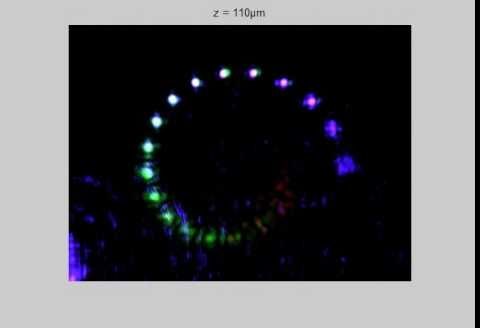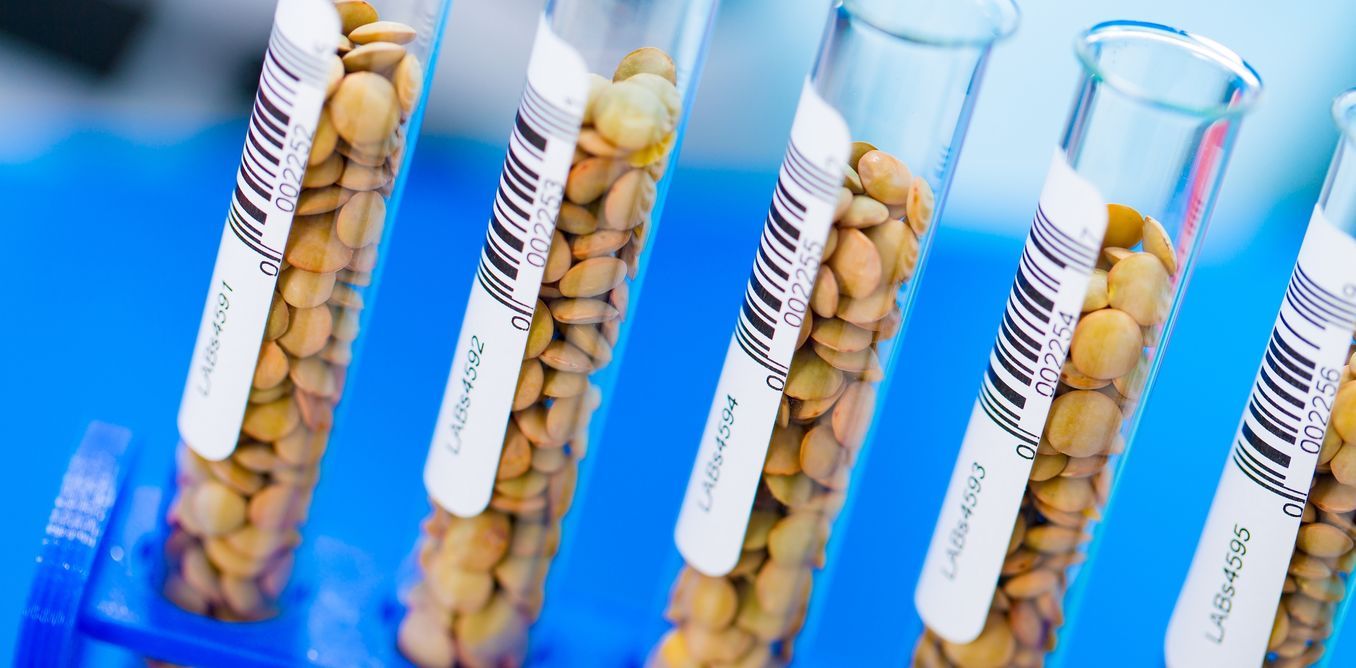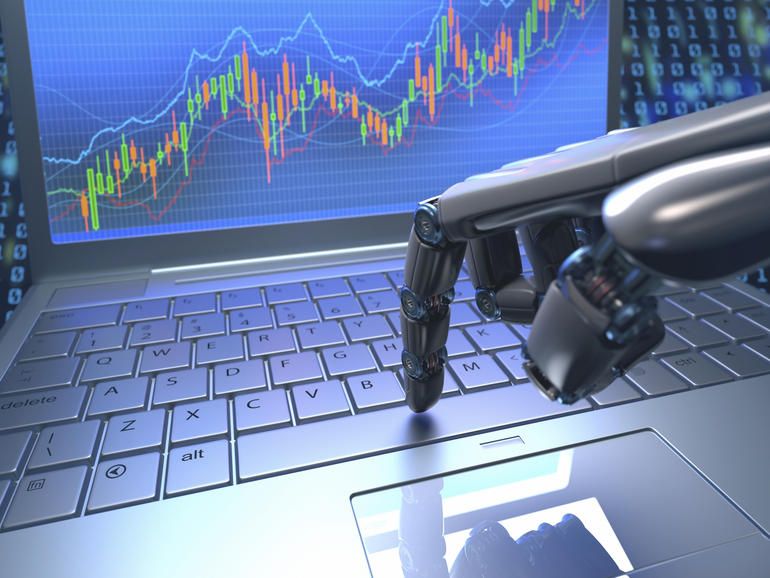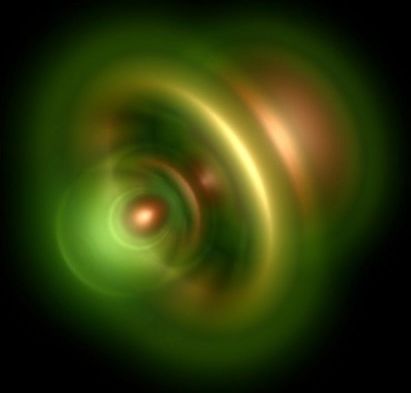Page 10462
Nov 9, 2016
World’s first light-seeking Synthetic Nano Robot Helps Remove Tumors
Posted by Karen Hurst in categories: biotech/medical, engineering, robotics/AI
Researchers have developed the world’s first light-seeking synthetic nanorobot that can help surgeons remove tumors and enable more precise engineering of targeted medications.
Don’t Miss: Sam’s Club Black Friday 2016 Deals
With size comparable to a blood cell, these tiny robots have the potential to be injected into a patient’s body, the study said.
Continue reading “World’s first light-seeking Synthetic Nano Robot Helps Remove Tumors” »
Nov 9, 2016
Full-color 3D meta-holography with a single nanostructured layer
Posted by Karen Hurst in category: nanotechnology

Nanowerk, the leading nanotechnology portal, is committed to educate, inform and inspire about nanotechnologies, nanosciences, and other emerging techs.
Nov 9, 2016
China launches X-ray pulsar navigation satellite
Posted by Karen Hurst in category: satellites
The XPNAV-1, developed by the China Academy of Space Technology, was sent skyward at 7:42 am atop a Long March 11 solid-fueled rocket from the Jiuquan Satellite Launch Center in northwestern China, the China Satellite Navigation Office said in a press release.
Nov 9, 2016
Changing Cell Behavior Could be Useful for Stem Cell Research, Biofuel Production
Posted by Karen Hurst in categories: biotech/medical, food, genetics, sustainability
For example, ordinary baker’s yeast cells normally produce a lot of alcohol, a biofuel, when fed sugar extracted from the edible kernels of corn plants. NetSurgeon designed genetic surgeries that convinced the cells to make more alcohol when fed a type of sugar found in the inedible leaves and stalks.
The research is published in PNAS Early Edition.
Nov 9, 2016
Bots give Microsoft Teams an edge on the competition–and on the future
Posted by Karen Hurst in categories: futurism, robotics/AI
Bots can be good.
Today’s mobile workforce is comfortable collaborating in a chat-based environment, so a smart company better have something to offer. Microsoft Teams is that something.
Nov 9, 2016
Trickling electrons
Posted by Karen Hurst in categories: particle physics, quantum physics
What would happen if an electric current no longer flowed, but trickled instead? This was the question investigated by researchers working with Christian Ast at the Max Planck Institute for Solid State Research. Their investigation involved cooling their scanning tunnelling microscope down to a fifteen thousandth of a degree above absolute zero. At these extremely low temperatures, the electrons reveal their quantum nature. The electric current is therefore a granular medium, consisting of individual particles. The electrons trickle through a conductor like grains of sand in an hourglass, a phenomenon that can be explained with the aid of quantum electrodynamics.
Flowing water from a tap feels like a homogeneous medium – it is impossible to distinguish between the individual water molecules. Exactly the same thing is true about electric current. So many electrons flow in a conventional cable that the current appears to be homogeneous. Although it is not possible to distinguish individual electrons, quantum mechanics says they should exist. So how do they behave? Under which conditions does the current not flow like water through a tap, but rather trickles like sand in an hourglass?
Nov 9, 2016
A Zeptosecond Stopwatch for The Microcosm
Posted by Karen Hurst in categories: particle physics, quantum physics
For the first time ever, laser physicists have recorded an internal atomic event with an accuracy of a trillionth of a billionth of a second.
When light strikes electrons in atoms, their states can change unimaginably quickly. Laser physicists at LMU Munich and the Max Planck Institute of Quantum Optics (MPQ) have now measured the duration of such a phenomenon – namely that of photoionization, in which an electron exits a helium atom after excitation by light – for the first time with zeptosecond precision. A zeptosecond is a trillionth of a billionth of a a second (10−21 s). This is the first absolute determination of the timescale of photoionization, and the degree of precision achieved is unprecedented for a direct measurement of the interaction of light and matter.
When a light particle (photon) interacts with the two electrons in a helium atom, the changes take place not only on an ultra-short timescale, but quantum mechanics also comes into play. Its rules dictate that either the entire energy of the photon is absorbed by one of the electrons, or the energy is distributed between them. Regardless of the mode of energy transfer, one electron is ejected from the helium atom. This process is called photoemission, or the photoelectric effect, and was discovered by Albert Einstein at the beginning of the last century. In order to observe what occurs, you need a camera with an incredibly fast shutter speed: The whole process, from the point at which the photon interacts with the electrons to the instant when one of the electrons leaves the atom, takes between 5 and 15 attoseconds (1 as is 10–18 seconds) as physicists have worked out in recent years.
Continue reading “A Zeptosecond Stopwatch for The Microcosm” »
Nov 9, 2016
Edward Snowden will discuss Trump & privacy: Nov 10th
Posted by Philip Raymond in categories: governance, government, internet, journalism, law enforcement, policy, privacy, security
Tune in tomorrow (Thursday, Nov 10, 2016) at 4:30PM Eastern. Find out what Edward Snowden has to say on the future of the US. [Source: StartPage via Engadget]
American technology policies could change significantly under Donald Trump, and that includes its stance on privacy. How will the new leader alter government surveillance, for example? Edward Snowden might have an answer. The whistleblower and Dutch search engine StartPage are hosting a live event on November 10th at 4:30PM Eastern to address what happens to privacy in the Trump era, among other questions. Snowden speaking engagements are nothing new, but this is special — he’s more than a little familiar with government spying activities, and this is his first chance to opine on how things might be different under a new administration.
Continue reading “Edward Snowden will discuss Trump & privacy: Nov 10th” »
Nov 9, 2016
Rejuvenation Biotechnology 2016
Posted by Steve Hill in categories: biotech/medical, life extension
One of the highlights this year was the SENS RB2016 conference which was live streamed and is available to watch right now if you missed if the first time around. Three days of exciting biotechnology smile
Although the event itself was invitation-only, our free live stream allowed viewers from 62 countries to enjoy a broad range of presentations on the emerging rejuvenation biotechnology industry and SRF’s critical role in driving forward the clinical translation of truly effective medicine for age-related disease.
Don’t worry if you missed it, though — the streamed videos remain available here!

















